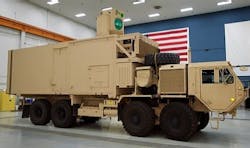Quiet, covert UAV flight is goal of IARPA program to develop gasoline-powered electric propulsion
WASHINGTON, 6 Oct. 2011.Unmanned aerial vehicles (UAVs) have become invaluable tools for military surveillance missions, but sometimes the sounds or infrared signatures of their propulsion systems can give away their presence to the enemy, which compromises their ability to make covert observations. To solve this problem, U.S. intelligence experts are asking industry to develop a quiet UAV propulsion system that generates electrical power quietly from gasoline or diesel fuel to enable purely electrically driven quiet flight.
Officials of the U.S. Intelligence Advanced Research Projects Activity (IARPA) Smart Collection Office in Washington issued a broad agency announcement Wednesday (IARPA-BAA-11-12) for the initial phase of the Great Horned Owl (GHO) program, which seeks to develop fuel-to-electricity systems that couple advanced combustion engines to alternators or generators, as well as electricity-to-thrust devices that use electric motor propulsion systems.
The intelligence surveillance and reconnaissance (ISR) role for UAVs depends on the ability of the UAV to operate without the adversary's being able to detect or counter it, IARPA researchers say. The sound of today's UAV engines and motors can alert the adversary to the UAV's presence, which can interfere with the mission.
Battery powered UAVs are very quiet but lack endurance and payload capability, IARPA officials say, so better, more efficient, quiet power sources and propulsion techniques are necessary for the next generation of UAVs for ISR missions.
The overall GHO program seeks to develop technologies able to extend the endurance and payload capabilities of ISR UAVs. Technologies for quiet, covert UAV flight are involved in the first 15-month phase of the program. The overall GHO program should begin in February 2012 and end by June 2016.
Related stories -- Power electronics blends with engine technology for integrated UAV propulsion solutions; -- Small, hybrid-powered, manpackable UAV is goal of Air Force SURGE-V program. |
Those interested in participating in the IARPA GHO program should respond no later than 22 Nov. 2011. Send proposals to ODNI/IARPA, Attention: Sam Wilson, Gate 5, 1000 Colonial Farm Road, McLean, Va. 22101.
For questions or concerns contact IARPA's Sam Wilson by phone at 301-851-7488, or by e-mail at [email protected]. Information is available at the GHO Website at www.iarpa.gov/solicitation_gho.html.
More information is available online at https://www.fbo.gov/notices/b002ecba78408a909214480e3668c8c6.

